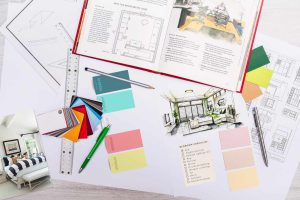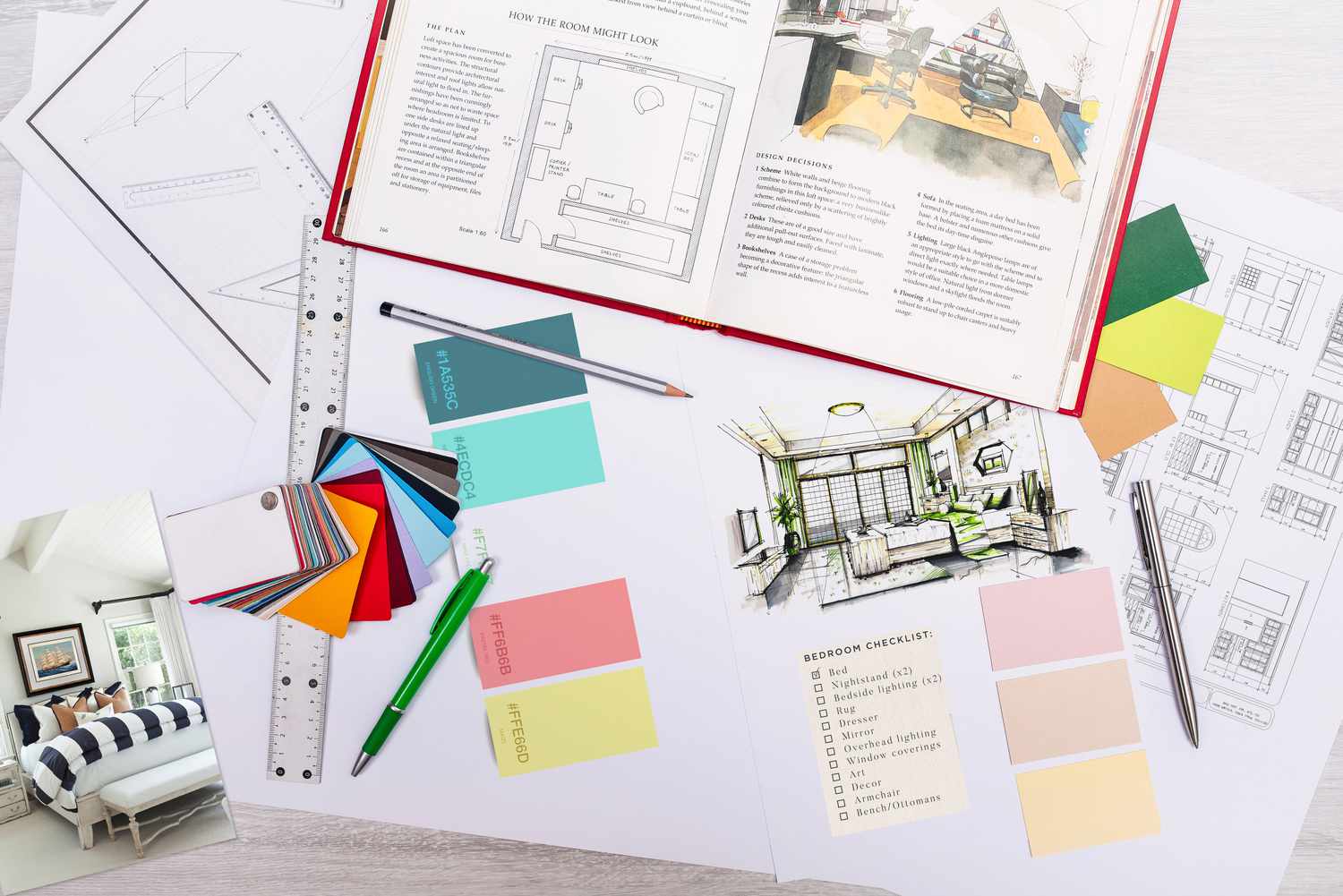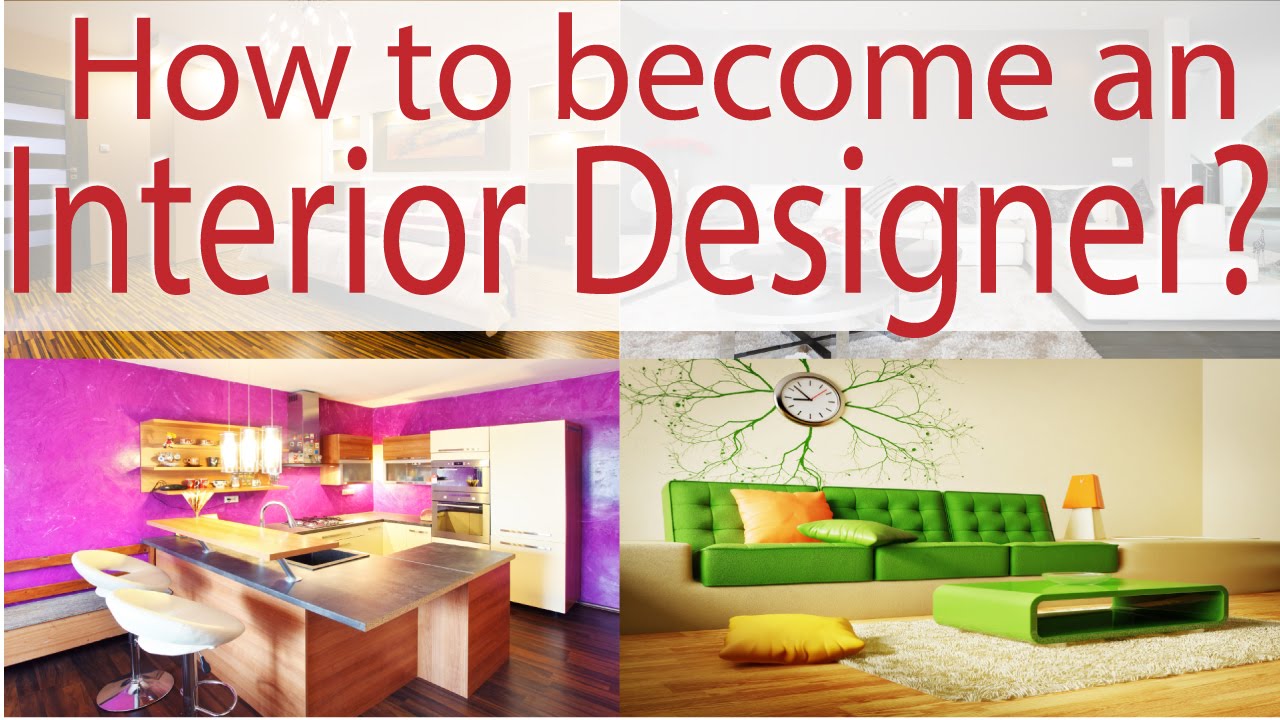Understanding how to become an interior designer or pursue a career in interior design, start by earning a degree in interior design or a related field, then create a diverse portfolio to showcase your skills. Gaining hands-on experience through internships and networking within the industry are crucial steps for success.
What Are the Main Types of Interior Designers?
Interior designers are creating in-home and business environments where many people spend significant amounts of time. Not only does the function of these areas matter, but also the design and architecture. Design is not a minor part of this process; it is closely related to architecture and interior design, owing to their fundamental principles. Interior design is a complex discipline, and a single designer can specialise in various areas. The main types of interior designers are as follows:
- Residential Interior Designer: This designer assesses a client’s living quarters to enhance their visual appeal, functionality, and comfort. They offer innovative ideas for home redecoration, renovation, new construction, and room redesigns, carefully researching their clients’ tastes and preferences when developing final concepts.
- Commercial Interior Designer: Commercial designers specialise in the design of workplaces and public spaces. Their role is to ensure that these environments are suitable for specific purposes, such as organisational collaboration, security and surveillance installations, special needs requirements, and compliance with building codes and regulations.
- Hospitality Interior Designer: These designers create luxurious and comfortable interiors for hotels, accommodations, restaurants, and other hospitality venues. Their aim is to enhance guests’ experiences and reflect the brands’ culture and values.
- Sustainable Interior Designer: If you want resources to be used efficiently and responsibly, consulting a sustainable interior designer is advisable. They focus on creating environmentally friendly and sustainable spaces, being mindful of the materials used, the energy consumed, and the disposal of any waste generated from the designs.
- Exhibition Designer: This designer creates temporary exhibition spaces and designs for events, trade fairs, museums, and galleries. Their goal is to craft stimulating environments that engage visitors with the message and create eye-catching spaces.
- Lighting Designer: These designers focus on lighting solutions that enhance the atmosphere and functionality of a space. Lighting designers work on residential and commercial projects, ensuring that lighting complements the overall design while meeting practical needs.
What Does an Interior Designer Do?

Interior designers are responsible for creating spaces that are both visually appealing and functional. They work closely with clients to understand their needs and preferences and use their skills to design environments that meet those requirements. It is essential for an interior designer to understand the needs of the customer or the general users to turn a space into a place where people would find it convenient and warm.
The main responsibilities of an interior designer include:
- Consulting with Clients: Interior designers guide clients through the design process by discussing their preferences, needs, and budgets. They may develop various design options, such as renovating a home or redesigning a commercial building.
- Developing Design Concepts: Based on the client’s specifications, designers confidently generate mood boards, digital mock-ups, sketches, or visualisations to represent design concepts tailored to the client’s vision.
- Selecting Materials and Finishes: If the brief specifies a “municipal library for 30,000 people,” the interior designers will choose materials, furniture, finishes, and accessories that align with a coherent design concept. This includes floors, paint colours, fixtures, furniture, and lighting—everything needed for the space.
- Drawing Floor Plans and Sketching Layouts: Interior design involves creating detailed floor plans and sketches to ensure that all elements fit efficiently within the space. This includes placing furniture, appliances, and decorative items while adhering to building codes, safety regulations, and other guidelines that enhance the design.
- Overseeing Construction and Installation: Interior design professionals often collaborate with general contractors, architects, and other specialists to ensure proper execution of the design. They may visit the site to oversee construction and verify that everything aligns with the plan.
- Work Within Budget: Interior designers are responsible for ensuring that the project stays within the client’s budget. This includes sourcing cost-effective materials, managing timelines, and adjusting the design as necessary to meet financial constraints.
- Ensuring Compliance with Regulations: In commercial projects, interior designers must ensure that the space complies with safety regulations, building codes, and accessibility requirements.
- Presenting Designs for Client Approval: Throughout the project, interior designers engage in feedback sessions with clients to present designs and obtain approval. Several revisions are made during this process to ensure the final design meets the client’s expectations.
Average Interior Designer Salary

The salary of interior designers in the UK depends on their experience, the area of the country, and whether they are working on commercial or residential projects. Generally, interior designers who work on high-end residential or commercial schemes in large metropolitan areas tend to earn higher salaries than those employed by smaller firms or in expanding businesses in more rural areas. Here is a breakdown of typical interior designer salaries:
- Entry-Level Interior Designer: Graduate interior designers earn between £20,000 and £28,000 a year.
- Experienced Interior Designer: An interior designer with several years of experience may earn between £30,000 and £45,000 a year. Designers working with high-end clients or large firms may earn significantly more.
- Senior Interior Designer: Salaries can reach up to £70,000+ for senior interior designers or those with over 10 years of experience in luxury residential or commercial projects.
Essential Skills of an Interior Designer
Becoming a professional interior designer requires a combination of creativity and craftsmanship. Interior designers must be able to visualise space, translate designs into functional plans, communicate effectively with others, and manage logistics and budgets. Here are the skills required to secure a job as an interior designer:
- Creativity and Aesthetic Sense: A strong sense of creativity and aesthetics is essential for interior designers to develop concepts and schemes that are visually appealing and unique to their clients.
- Spatial Awareness: Interior designers need excellent spatial awareness to determine how a space should be laid out. Before a design is realised, they must consider how the arrangement of a room will impact how people use it and navigate through it. This includes understanding how far people will need to walk or reach for objects and identifying any obstacles that might hinder effective workflow.
- Technical Knowledge: Designs must be technically sound. Therefore, a successful interior designer should be familiar with architectural plans and the necessary sequences for completion (e.g., knowing which steps come first and whether tasks can be completed directly or must be approached indirectly). They should also understand building codes, safety regulations, and material specifications, as well as create detailed floor plans and technical drawings using software like AutoCAD.
- Communication Skills: Strong communication skills are crucial, as interior designers must convey design layouts for various spaces. They need to translate specifications from clients to contractors and maintain open lines of communication with other designers. Clear articulation of designs and reasoning, along with responsiveness to questions and feedback, is essential; in essence, they must act as diplomats.
- Project Management: While interior designers often oversee the implementation of their design choices, effective project management is vital to keep projects on track, including managing timelines, budgets, and contractor relationships.
- Attention to Detail: Interior designers must pay close attention to detail to ensure that all elements of the design, such as furniture placement and lighting, are carefully considered.
- Knowledge of Design Software: Proficiency in design software such as AutoCAD, SketchUp, or Adobe Creative Suite is important for creating digital mock-ups, floor plans, and presentation renderings for clients.
Interior Designer Tips

For those aspiring to realise their dream of becoming an interior designer or pursue a career as an interior designer, here are some valuable tips for them:
- Build an Impressive Portfolio: Your portfolio is your most important tool for connecting with clients and employers. Create a diverse portfolio that showcases various projects, demonstrating your creativity and technical skills. It should reflect your ability to work in multiple styles and environments.
- Stay Up to Date on Trends: The interior design industry evolves constantly, with new trends, materials, and techniques emerging regularly. Stay informed about the latest trends and incorporate them into your designs when appropriate.
- Network with Industry Professionals: Networking is key to success in the interior design industry. Attending industry events, gatherings, workshops, and exhibitions is essential for creating contacts and strengthening your network.
- Gain Experience: Internships or assistant roles at design firms can provide valuable hands-on experience. These roles allow you to learn from experienced designers and build practical skills that will serve you throughout your career.
- Develop Project Management Skills: You may have tight deadlines, such as designing a commercial space in just two weeks while managing another contractor for a kitchen design. Learning to manage time and budgets effectively is crucial for an interior designer.
- Consider Specialising: Specialising in a niche, such as sustainable design or hospitality design, can set you apart in a competitive industry and allow you to command higher fees.
Interior Designer Requirements
While you do not need a formal education to work as an interior designer, many designers benefit from obtaining a degree or certification in interior design or a related field. Here are the basic requirements for becoming an interior designer:
- Bachelor’s Degree or Equivalent in Interior Design or Related Field: Most interior designers pursue a BA or BSc in Interior Design, Architecture, or Fine Arts. These courses provide a solid grounding in design principles, technical skills, and hands-on experience.
- Portfolio of Work: It goes without saying that you need a portfolio, and it should be impressive. Diversity is key; include sketches, mood boards, floor plans, and finished designs.
- Software Proficiency: While interior designers rarely create substantial drawings by hand, you will need to be proficient in design software such as AutoCAD, SketchUp, and Adobe Creative Suite. Additionally, understanding how to manage projects with project management software is often necessary.
How to Become an Interior Designer

Here’s a step-by-step guide to becoming an interior designer in the UK:
- Get a Degree (or Certificate) in Interior Design: Many interior designers start by earning a Bachelor’s degree (or an associate degree or diploma) in Interior Design, Architecture, or a related field such as Visual Merchandising. Degree programmes usually provide a foundation in the basic principles of design theory, space planning, and technical drawing.
- Create a Portfolio: Assemble a portfolio that demonstrates your design aesthetic and versatility. Include a variety of projects, such as residential, commercial, hospitality, and multi-family designs.
- Gain Practical Experience: Look for internships or assistant roles with established interior designers or design firms. Practical experience is invaluable for learning the ropes of the industry and building a professional network.
- Learn Design Software: Become proficient in leading industry software such as AutoCAD, SketchUp, and Photoshop to create design plans, building renderings, and other presentations.
- Start Networking: Attend industry events, design exhibitions, and workshops to meet potential clients, contractors, and other professionals. Networking is key to building relationships in the interior design world.
- Consider Freelancing or Joining a Firm: Depending on your career goals, you can choose to either join an interior design and furnishing firm or freelance. Freelancing offers more creative freedom but requires strong business management skills.
- Stay Informed About Trends and Technologies: The interior design industry is dynamic, with new trends, materials, and technologies emerging regularly. Staying updated is essential for success.
- Obtain Licences or Certifications (If Applicable): While you do not need a specific licence to be an interior designer in the UK, you should register with the National Careers Service if working independently. Certifications from institutions such as the British Institute of Interior Design (BIID) or the Interior Designers Association (IDA) can enhance your professional standing and are recognised by prospective employers. Some employers may prefer candidates with these certifications.
- Establish a Digital Presence: Design and develop a website or online portfolio to showcase your work. Use platforms like Pinterest and Instagram to increase your visibility and attract clients.
- Develop a Marketing Strategy (if Freelancing): If you are freelancing, create a marketing strategy. Establish your brand, network actively, start a design blog or YouTube channel, and engage in local or online design communities.
Get Qualified as an Interior Designer
Interior Design Basics, Certificate in Interior Design, Fundamentals of Interior Design, Diploma in Interior Design: Home Styling & Decorating With Complete Career Guide,
Frequently Asked Questions
Why Should You Become an Interior Designer?
Do you want to channel your artistic side while creating professional and functional spaces? Becoming an interior designer allows you to unite aesthetics with functionality, design with purpose, and flourish in a career that often involves working on a wide range of projects. You’ll serve clients with diverse goals and design visions, from private homes to hotels and other commercial spaces. If you have a passion for solving problems and enjoy collaborating with clients on projects of all sizes, interior design may be the right career for you.
Is Being an Interior Designer a Good Career Choice for You?
Do you love design and anything creative? Are you skilled at noticing details that others might miss? If so, interior design could be an ideal fit. This profession offers ample scope for artistic expression as well as the opportunity to learn technical and project management skills. Interior design spans almost every sector of architecture, construction, and related industries, providing a broad range of job opportunities in constantly evolving environments. The career also offers excellent prospects for growth.
Interior Designer Salaries
In the UK, interior designer salaries can range from £20,000 to over £70,000, depending on experience, location, and whether the designer is a generalist or specialises in a particular field. Starting designers can expect to earn between £20,000 and £28,000 annually. Those with moderate experience typically earn between £30,000 and £45,000, while senior designers can command salaries from £45,000 to £70,000+ by working on bespoke projects or in metropolitan areas.
Which Qualifications Can Help with a Career as an Interior Designer?
A degree or diploma in Interior Design from a reputable institution is beneficial, as it provides the technical and creative training necessary for the role. Proficiency in design software such as AutoCAD and SketchUp is valuable, and career prospects can be enhanced by obtaining certifications from industry bodies like the British Institute of Interior Design (BIID).
Do I Need Experience to Get Started as an Interior Designer?
While formal education is helpful, gaining hands-on experience is crucial for developing the skills needed to create well-designed homes and offices. This experience can be acquired through internships, assistantships, or freelance projects, allowing you to build your portfolio and establish a network within the industry.
Interior Designer Career Outlook
There is ample business for interior designers, as companies and homeowners invest in everything from revamped office spaces and restaurants to dream homes. Emerging trends indicate even more opportunities in the field. Designs focused on wellness are growing in popularity, and smart technology is becoming more affordable and easier to install. Interior designers can position themselves as specialists in one or several of these areas. The career is also flexible; you could work for an interior design firm, an architectural practice, or as a freelancer.
Interior Designer Hierarchy and Progression Within the Role
With accumulated experience, some designers rise through the ranks within design firms or architectural practices to become senior designers. They may advance to roles such as Lead Designer or Design Director as they take on larger projects and supervise teams. Some interior designers eventually establish their own firms, while others work as consultants for architectural firms on large property and infrastructure projects.
Interior Designer Exit Options and Opportunities
Interior designers have various pathways to explore, such as becoming set designers, exhibition designers, or furniture designers. They may transition into project management, property development, or home staging, or specialise in areas like sustainable design or lighting design. For those with a strong portfolio and good reputation, the next step could be to become design consultants or launch their own firms.


